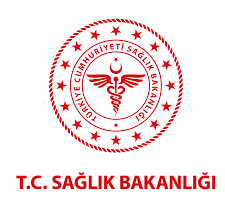Jamie Lee Curtis and Liposuction
Jamie Lee Curtis, a Hollywood icon known for her timeless beauty and talent, has always been candid about aging and cosmetic procedures. Over the years, speculation has surrounded her transformation, leading many to wonder whether liposuction played a role in maintaining her figure. But what exactly is liposuction, and how does it compare to natural aging?
In this article, we’ll explore the reality behind Jamie Lee Curtis’s transformation, provide a clear understanding of liposuction, and discuss how it aids in body contouring. Additionally, we’ll examine the benefits of the procedure and help you determine whether liposuction is the right choice for you.
The Truth Behind Jamie Lee Curtis’s Transformation
Jamie Lee Curtis has long been admired for her ageless beauty, but her transformation over the years has sparked curiosity and speculation. Unlike many celebrities who openly discuss cosmetic surgeries, Curtis has taken a more private approach to her journey. She has been open about embracing natural aging and rejecting the pressure to look youthful at any cost.
However, over time, people have noticed a shift in her appearance, leading to the question: did liposuction play a role in her transformation? While Curtis has not explicitly confirmed or denied having cosmetic procedures, she has consistently advocated for self-acceptance and rejecting unrealistic beauty standards. The truth behind her transformation lies in her embrace of aging gracefully and confidently, rather than adhering to the trends that dominate Hollywood’s beauty culture.
In the following sections, we’ll explore the role of liposuction in body transformation and the broader context of aging, helping to demystify the processes that can contribute to a change in appearance.
Advice: Liposuction
What is Liposuction?
Liposuction is a cosmetic surgical procedure designed to remove excess fat from specific areas of the body, helping to sculpt and contour the body’s shape. The process involves using a thin tube, known as a cannula, which is inserted through small incisions in the skin. This cannula is connected to a suction device that removes fat from areas where it’s more resistant to diet and exercise.
Common treatment areas include the abdomen, thighs, arms, and chin, but liposuction can target almost any area where fat tends to accumulate. The procedure is typically done under local anesthesia or general anesthesia, depending on the extent of fat removal and the patient’s preference.
While liposuction is not a weight-loss solution, it is effective in treating localized fat deposits that do not respond to traditional weight loss methods. The results can create a more toned and defined appearance, which is why it is often sought by individuals looking to refine their body contours.

Liposuction vs. Natural Aging: What’s the Difference?
Liposuction and natural aging both influence the body in different ways, but understanding their distinctions is crucial when considering cosmetic procedures.
Liposuction targets excess fat that has accumulated in specific areas of the body. It involves removing fat cells permanently, resulting in a more sculpted, contoured appearance. Liposuction is ideal for people who have stubborn fat pockets that do not respond to diet and exercise. However, while it removes fat, it doesn’t address other aspects of aging, such as skin elasticity or muscle tone.
On the other hand, natural aging is a gradual process that affects the entire body. As we age, skin loses collagen and elasticity, and muscles naturally weaken. Fat distribution also changes, with some areas of the body experiencing more fat accumulation due to hormonal changes or genetics. Unlike liposuction, natural aging leads to a softer, more gradual transformation, with fat typically accumulating in the abdomen, thighs, and under the chin.
The key difference between the two is that liposuction directly targets and removes fat, creating a more immediate, visible change. In contrast, natural aging is a broader process that involves changes in skin, muscle, and fat distribution over time. While liposuction can help address localized fat buildup, it doesn’t stop the aging process, meaning that individuals still need to adopt healthy lifestyle habits to maintain their results as they age.
How Liposuction Helps in Body Contouring
Liposuction is a highly effective method for body contouring, offering individuals the opportunity to achieve a more defined and sculpted physique. Unlike weight-loss methods that focus on overall fat reduction, liposuction specifically targets localized fat deposits that may be resistant to diet and exercise, helping to refine and shape certain areas of the body.
The procedure allows for precise fat removal from areas such as the abdomen, thighs, arms, back, and even the chin, creating smoother, more balanced contours. By removing unwanted fat, liposuction can enhance the body’s natural proportions, leading to a more aesthetically pleasing silhouette. The result is a more toned appearance that can significantly boost self-confidence.
Liposuction also plays a key role in reshaping the body by removing fat from stubborn areas that often don’t respond to traditional weight loss methods. It is particularly effective for individuals who are near their ideal body weight but struggle with localized fat pockets that affect their overall shape. By selectively removing fat, liposuction helps achieve better-defined curves and a slimmer appearance.
Benefits of Liposuction
Liposuction offers numerous benefits, making it a popular choice for individuals looking to enhance their body shape. Here are some of the key advantages:
- Targeted Fat Removal: Liposuction allows for the removal of fat from specific areas of the body, helping to address stubborn fat pockets that don’t respond to diet and exercise. This is particularly beneficial for people who have localized fat deposits on areas like the abdomen, thighs, or arms.
- Improved Body Contours: One of the primary benefits of liposuction is its ability to create more defined and balanced body contours. By sculpting targeted areas, liposuction can enhance a person’s overall silhouette, offering a slimmer, more toned appearance.
- Long-Lasting Results: The fat cells removed during liposuction do not return. As long as individuals maintain a healthy lifestyle, the results of liposuction can be permanent, giving long-term satisfaction with the procedure.
- Boost in Self-Confidence: Many individuals report an improvement in self-esteem and body image following liposuction, as the procedure can help them feel more comfortable and confident in their appearance. This can have positive effects on mental well-being.
- Minimal Downtime: While liposuction is a surgical procedure, recovery time is typically relatively short compared to other types of surgeries. Most individuals can return to light activities within a few days to a week, depending on the extent of the procedure.
- Non-invasive Alternatives: In some cases, liposuction can be performed using minimally invasive techniques, such as laser or ultrasound-assisted liposuction, which can reduce discomfort and recovery time.
Ultimately, liposuction is a highly effective procedure for those seeking to improve their body contours and remove stubborn fat in specific areas, helping to achieve a more youthful and toned appearance.
Advice: 360 Liposuction
Is Liposuction Right for You?
Liposuction can be an effective solution for many people looking to refine their body shape, but it’s not suitable for everyone. Before deciding if liposuction is right for you, it’s important to consider several factors:
- Healthy Body Weight: Ideal candidates for liposuction are those who are at or near their ideal body weight but struggle with stubborn fat deposits that don’t respond to diet or exercise. Liposuction is not a weight-loss procedure, so individuals with significant weight to lose should consider other methods first.
- Good Health: As with any surgical procedure, candidates for liposuction should be in good overall health. Conditions like heart disease, diabetes, or poor circulation may increase the risk of complications. A thorough medical consultation with a surgeon is necessary to assess health and suitability for the procedure.
- Realistic Expectations: Liposuction is not a cure-all for body image concerns. While it can help sculpt and contour the body, it’s important to have realistic expectations about the outcomes. It is a cosmetic procedure aimed at enhancing the body’s natural proportions, not achieving perfection.
- Stable Weight: For long-lasting results, it’s important that individuals maintain a stable weight after the procedure. Significant weight gain after liposuction can result in uneven fat distribution and may diminish the results.
- Age and Skin Elasticity: Liposuction can be more effective in individuals with good skin elasticity. As we age, the skin naturally loses elasticity, which can affect how it adapts to the new contours after fat removal. For older individuals, the skin may not retract as well, leading to loose skin in the treated areas.
If you meet these criteria and are considering liposuction, consulting with a qualified cosmetic surgeon is essential. They can help you understand the potential benefits and risks, and determine if liposuction is the best option to achieve your desired results.
In conclusion, liposuction is a powerful tool for body contouring, offering individuals the opportunity to enhance their natural shape by removing stubborn fat. While it is not a solution for weight loss or an antidote to aging, it can provide lasting results for those seeking to refine specific areas of their body. Like any cosmetic procedure, it’s important to weigh the benefits, risks, and personal goals before making a decision. If you’re considering liposuction, consulting with a qualified surgeon can help guide you through the process and ensure the procedure aligns with your expectations. Ultimately, the choice to undergo liposuction is a personal one, and with the right preparation and understanding, it can help you achieve a more confident, sculpted version of yourself.

















